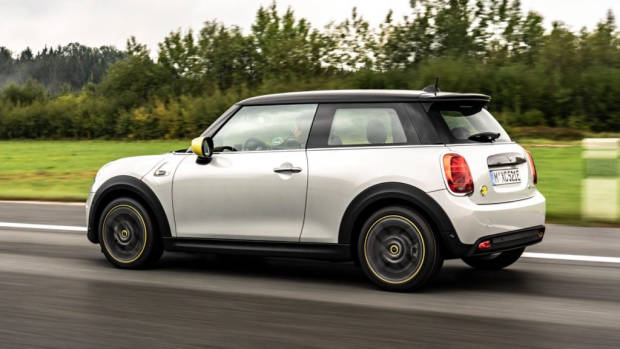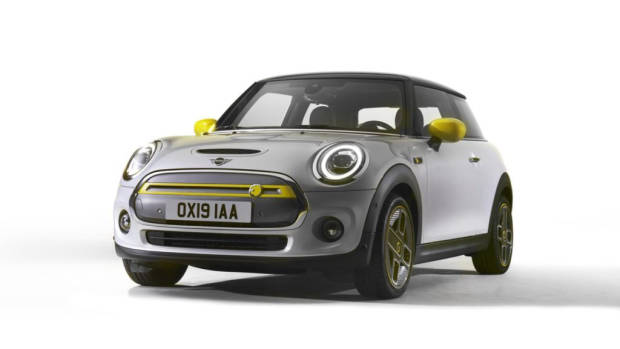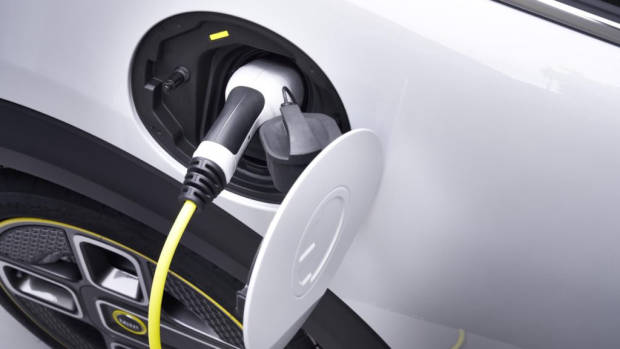-
Car Reviews
- All reviews
- Midsize SUVs
- Small cars
- Utes
- Small SUVs
- Large SUVs
- Large cars
- Sports SUVs
- Sports cars
- Vans
Latest reviews
- Car News
-
Car Comparisons
Latest comparisons
- Chasing Deals
Mini has debuted an all-electric model at the 2019 Frankfurt Autoshow. Badged the Mini Cooper SE, it’s arrival in Australia is confirmed for mid-2020. 60 years on from the original Mini’s introduction, electrification is one of the biggest technological advancements in the Mini since Alec Issigonis’ 1959 original packaging masterpiece.
While the Cooper SE doesn’t push its electrified image too hard, it has been lightly re-styled; look closely and you’ll notice the covered grilles and vents as these are not necessary for cooling on an EV. This change also keeps the SE more aerodynamic than its brethren.
Fans of the Mini can rejoice though, as the Cooper SE has remained faithful to its heritage. The design is unmistakably Mini, cute and retro without losing any style points. The SE will likely be a hit with the inner-city crowd and lovers of the Mini brand alike.

Power in the Mini Cooper SE is produced by two electric motors and totals 135kW, allowing the SE to complete the 0-100km/h sprint in a respectable 7.3 seconds. The battery found in the Cooper SE is a 32.6kWh lithium ion unit from which Mini claim a range of between 235-270km, being most efficient in city use.
Electric cars have yet to really take off in Australia due to a combination of long distances and poor infrastructure. This has meant petrol, diesel, or hybrid options are still seen as a more logical choice for most. The BMW Group has struggled to sell its EVs here, with their i3 120Ah costing a hefty $68,700 ($74,795 driveaway) putting it out of reach of most looking for a compact city car. The high price of the i3 is due to its bespoke production and use of carbon fibre, though it shares much of its drivetrain tech with the new Mini SE.
Mini have taken a different approach to most as Chasing Cars found out when we visited the Oxford UK plant. The Cooper SE sees a more streamlined approach and will be built on the normal Mini production line, internal combustion engine models will simply sail past the battery and motor station in the production line.

Though Australian pricing for the Mini Cooper SE is unconfirmed, this more cost-effective production should give the Cooper SE a pricing advantage over other EVs like the quirky BMW i3, Hyundai Kona electric, VW ID.3, Honda E, and Tesla Model 3.
Electrification might be the best way to stay true to the original Mini ethos as well packaged, quick, and – most importantly – fun urban vehicle. The instant torque of the electric motors and low centre of gravity from the battery placement on-top of the already charming chassis of the F56 Mini should combine to give the Cooper SE “go-kart handling” Mini is claiming.
The Mini’s familiar retro aesthetic and brand strength will likely increase its appeal over more quirky and unproven EV options out there. With reasonable electric range and nippy handling the Cooper SE will make a friendlier proposition for those looking to make the leap from internal combustion motoring to electric propulsion, especially for city use.

The Mini Cooper SE will arrive in Australia in mid 2020, with pricing and further specifications to be announced closer to arrival. We can’t wait to see how the Cooper SE will stack up against both its EV and ICE competitors.
Latest news
About Chasing cars
Chasing Cars reviews are 100% independent.
Because we are powered by Budget Direct Insurance, we don’t receive advertising or sales revenue from car manufacturers.
We’re truly independent – giving you Australia’s best car reviews.